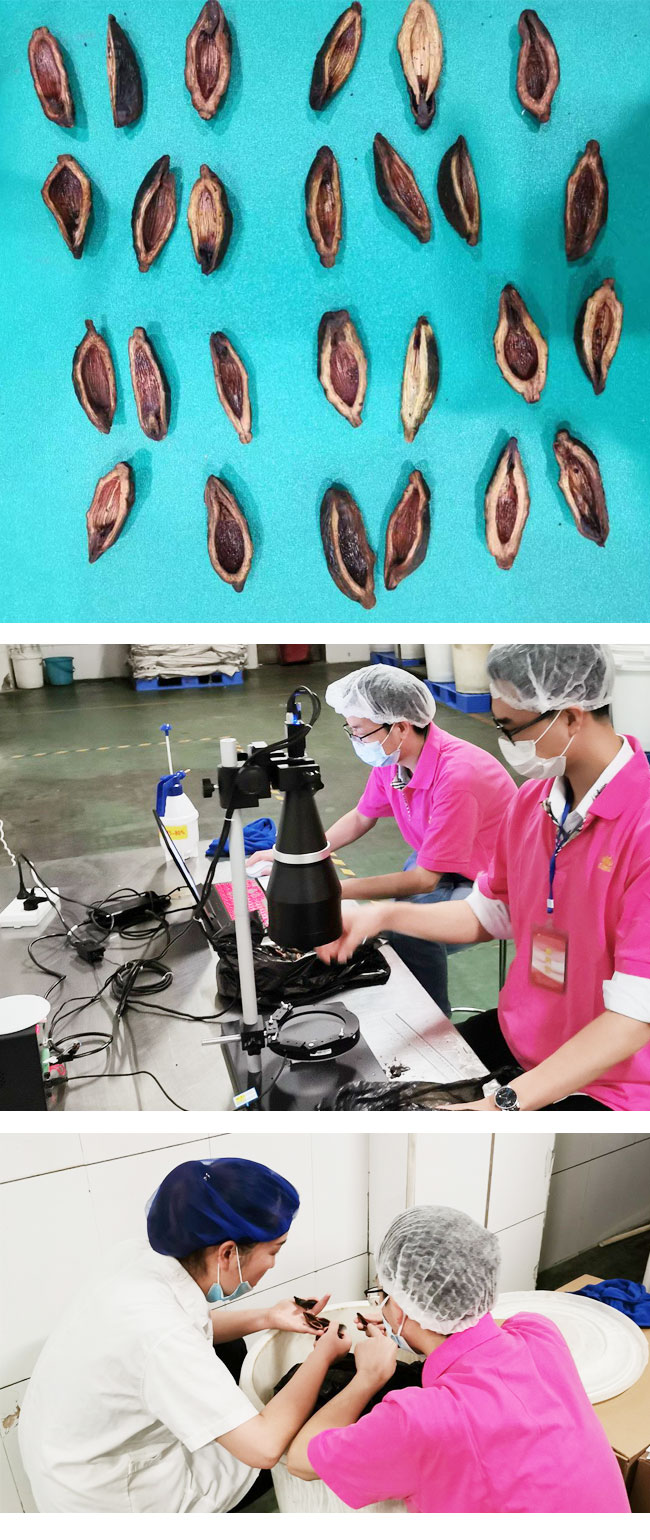
Project information:
(1) The selection of slices is one of the existing processing procedures and technological processes for green fruit betel nut. Defects related to the selection process include: blackening of the fruit cavity (mold), failure to remove the core, and modification of the blade seeds (asymmetric slicing, where the overly thin slice may be a "thin slice" defect, and the overly thick slice is the modification of the blade seeds, which requires another cut. Overthickness affects the taste, causes significant damage to the oral cavity, and also affects subsequent automated braising), thin slices, and rotting of the head and tail parts Extra long seeds (grinding mouth), etc.
(2) In the selection process, in addition to detecting the above-mentioned defective products, the selection workers also need to grade the slices based on the shape of the fruit (mainly based on the length/width of the fruit body and the length/width of the fruit cavity), such as the 15 yuan, 20 yuan, 30 yuan and above levels. In some price ranges, in order to ensure consistency in the shape of the same package of finished products, a price range level will be divided into 2 or more sub levels according to length, which requires precise measurement of the length/width of the fruit body and cavity. For high-end betel nuts, such as some products priced at tens or even hundreds of yuan per package, on the basis of automated screening, manual screening is also necessary to ensure that no defective products can enter the hands of consumers. Sorting is crucial for the brand strategy of large betel nut factories.
(3) At present, the manual detection rate is selecting 5000-8000 pieces per hour.
Difficulties:
(1) There are differences in the dryness and wetness of the surface of each betel nut, the color of the surface flesh, the size and depth of the betel nut, and the depth of the fruit cavity.
(2) The size of betel nuts varies, the incoming posture is inconsistent, and the characteristics of betel nuts themselves are not uniform, requiring the use of artificial intelligence deep learning algorithms for relevant types of defect detection.
Summary:
(1) On the basis of years of accumulation of traditional visual technology, combined with deep learning technology. Annotate and train the back, section, and inner cavity areas of betel nut separately, and use various models such as AI deep learning for image classification and defect detection to continuously iterate and learn, achieving autonomous discrimination.
(2) Detectable defect types: blackening of fruit cavity, non pitted, modified seeds, thin slices, waste slices, head and tail rotting, extra long seeds, waste bubbles, pulp separation, etc.
(3) The detection rate of this system is 20-30 pieces per minute, which is not the optimal rate. The image acquisition plan can be adjusted according to the needs of the optimal design of the institution. For example, changing from taking one betel nut per image with an array camera to taking multiple betel nuts per image with an array or line scan camera, and changing from the opening of the betel nut feed facing upwards to any controllable orientation.
